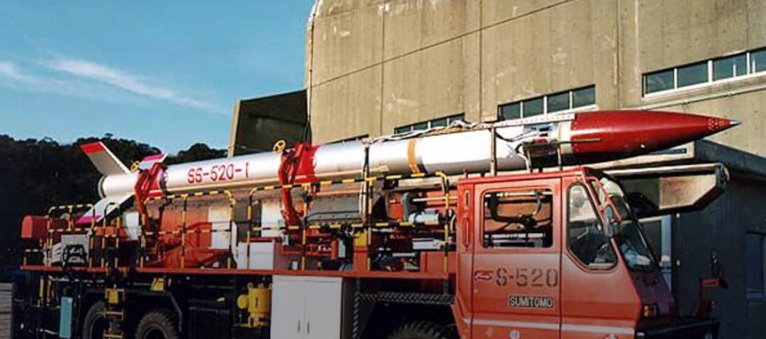
The rocket was touted as the smallest one capable of launching a satellite, however something obviously went very wrong.
JAXA terminated a satellite launch in mid-flight Sunday after a communications malfunction forced the space agency to abort ignition of the host rocket’s second stage.

An SS-520 rocket is shown in this undated photo from the Japan Aerospace Exploration Agency. | JAXA
The No. 4 vehicle of the SS-520 rocket series lifted off at 8:33 a.m. from Uchinoura Space Center in Kagoshima Prefecture carrying a miniature Earth observation satellite, the Japan Aerospace Exploration Agency said. The rocket was touted as the smallest one capable of launching a satellite.
But the agency aborted ignition of the second stage three minutes into the launch after discovering a glitch in the communications system. The rocket and its tiny payload then tumbled into the sea.
“It’s very regrettable. We’d like to determine the cause” of the failure, said Hiroto Habu, an associate professor at JAXA, said later in the day.
The space agency said the rocket stopped sending signals to its operations center just 20 seconds after liftoff. It has no further plans to launch a rocket of this size, it said.
Resembling a utility pole at 10 meters long and 50 cm in diameter, the rocket was developed as a potential vehicle for launching minisatellites, a growing segment of the space industry.
Roughly one-fifth the size of JAXA’s mainstay H-IIA rocket, the SS-520 is a three-stage type based on a two-stage model used by JAXA. It was designed to place a satellite weighing up to 4 kg in orbit at an altitude of up to 2,000 km.
“The cause of the failure is not known at all yet. All we can do is just analyze the data we got until communications were disrupted,” said Shinya Matsuura, a writer familiar with rocket development. “I hope they won’t be discouraged and will try another launch, because demand for launches of minisatellites is growing worldwide.”
Matsuura said China has made significant progress in rocket development in recent years. He said Japan should invest more in fundamental research and development so it will not get left behind.
The rocket was carrying Tricom1, a 3-kg satellite developed by the University of Tokyo that measured 10 cm by 10 cm by 35 cm. It was designed to transmit images of Earth’s surface for about a month before re-entering the atmosphere and burning up.
JAXA, which undertook the mission to demonstrate the cost-cutting potential for satellite launches, used commercially available devices found in home electronics and smartphones to inspire private firms keen on entering the space launch business.
It cost an estimated around ¥500 million ($4.3 million) to produce and launch the slender rocket.


